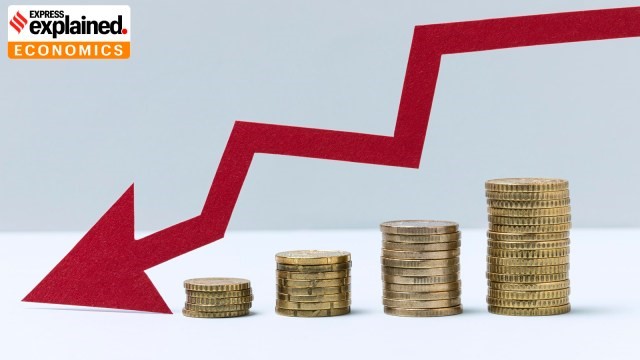Inflation: A Double-Edged Sword for Economic Growth and Fiscal Stability

- 30 Sep 2025
In News:
Inflation, the sustained rise in general price levels, remains one of the most debated macroeconomic phenomena. While high inflation erodes purchasing power and destabilizes economies, moderate and predictable inflation is often considered essential for sustained growth and fiscal stability. Its impact, however, varies depending on the broader economic context and the balance between price stability and growth objectives.
Understanding Inflation and Its Role
Economists typically define inflation as a result of “too much money chasing too few goods.” Moderate inflation signals expanding demand and healthy economic activity, while very high or negative inflation (deflation) indicates structural imbalances. Central banks, such as the U.S. Federal Reserve and the Reserve Bank of India (RBI), usually target a low but positive inflation rate — around 2% — to maintain price stability and incentivize investment.
Mild inflation helps prevent deflation, which discourages spending and investment as consumers postpone purchases in anticipation of falling prices. The British economist John Maynard Keynes argued that a small amount of inflation encourages consumption, supports employment, and sustains aggregate demand. This aligns with the concept of the Phillips Curve, which once suggested a trade-off between inflation and unemployment, though the relationship has weakened in recent decades.
Economic Benefits of Moderate Inflation
A modest level of inflation can stimulate economic activity when idle capacity and underutilized labor exist. Rising prices encourage producers to expand output, generating more employment and income. Borrowers, including businesses and households, also benefit since debts can be repaid with “cheaper” money, thus encouraging borrowing and spending. Fixed-rate homeowners and long-term debtors gain, as the real value of their obligations declines over time.
For governments, inflation contributes positively to nominal GDP growth, the key denominator in fiscal ratios such as the debt-to-GDP ratio and fiscal deficit. Higher nominal GDP, driven partly by price growth, increases tax collections and helps meet revenue and deficit targets. Hence, inflation, within manageable limits, supports both macroeconomic stability and fiscal sustainability.
Challenges of High or Low Inflation
Excessive inflation, however, leads to declining real incomes, uncertainty, and reduced investment. Rising input and borrowing costs can trigger stagflation — a combination of stagnant growth and high inflation. On the other hand, very low inflation, as seen in India recently with CPI inflation at 2.07% (August 2025) and WPI at 0.52%, presents a different set of challenges.
While subdued prices benefit consumers, they constrain the government’s fiscal arithmetic. Lower inflation suppresses nominal GDP growth — the sum of real growth and inflation — reducing tax revenue growth and widening fiscal gaps. The Union Budget 2025–26 projected nominal GDP growth at 10.1%, but with low price levels, actual growth has trailed this target, weakening revenue collection and straining fiscal balances.
Moreover, persistently low inflation can reflect weak demand and investment sentiment. Although corporate profits have risen due to falling input costs, private capital expenditure remains sluggish, suggesting that firms are not reinvesting profits into productive capacity — a sign of demand-side weakness rather than efficiency gains.
Conclusion
Inflation’s impact on an economy depends on its source, magnitude, and persistence. Moderate inflation supports economic dynamism, government finances, and debt sustainability. However, extremes on either side — hyperinflation or deflation — can destabilize the macroeconomic framework. For India, the policy challenge lies in maintaining a delicate balance: ensuring that inflation stays within the target range to protect consumers while sustaining enough price growth to support investment, job creation, and fiscal health.
